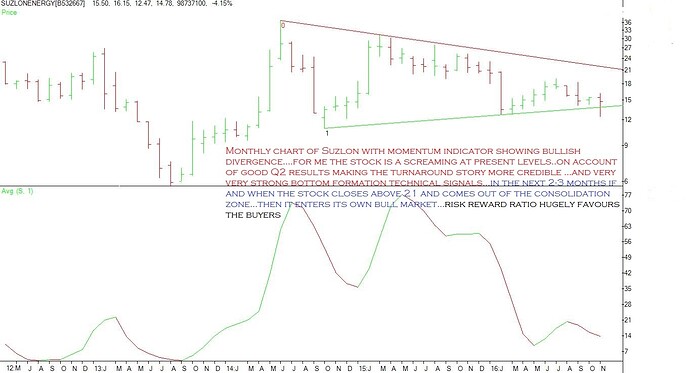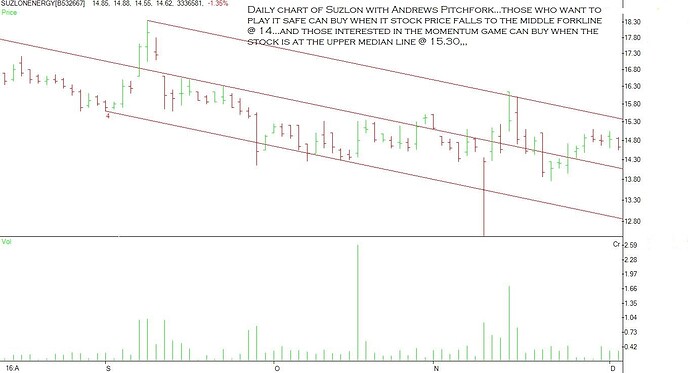I was reading this article on Business Standard and like to invite views from the fellow members.
Key Positive Triggers:
-
Suzlon reduce 14% debit in FY16, Interest costs are down 42% y-o-y
-
40% compounded annual growth expected in Suzlon’s Ebidta over the next two years; and a 32% fall in interest cost in FY17.
-
Risk diversification using entry into Solar
-
Better Turbines to increase Plant Load factor
-
No Further Equity dilution required a Operational Cash Flows could reduce further debt
-
Focus on Hybrid where in Wind and Solar can be deployed. For ex: They did this in Rajasthan
-
Order book is from independent power producers and not from Tax relief for investors.
-
Better Technical Knowhow
-
Sharper Focus on 19 countries worldwide instead of 30+ countries
-
target to reclaim 50+% market share progressively in the medium term
http://www.livemint.com/Companies/9mCWYKkq2SqEwYbwV2luEJ/Winds-of-change-at-Suzlon-Energy.html
Tanti’s gameplan
Tanti has a three-pronged strategy for revival: introduce next-generation turbine technology; launch hybrid solutions including wind and solar energy; and bring in power storage solutions over the next three to four years.
Tanti is most excited about hybrid solutions, which he says will boost plant load factors for power producers using both wind and solar energy. “We are building our first hybrid wind and solar project in Rajasthan. We have already signed an agreement with the government for a 1.5GW project,” he said.
In its mainstay wind business, Suzlon wants to target a production capacity of 3,500-4,000MW a year. The company plans to grow capacity up to 5,000MW in the next few years
Key Risks:
The government set an ambitious target of adding 175 GW of clean energy capacity by 2022. This includes 100 GW of solar power, 60 GW of wind power and 15 MW of biomass energy.
-
The government’s target for wind energy (60 GW) is only 60 percent of its aim for solar. Plus, 41 percent of this target has been achieved already, leaving the authorities enough space to make a concerted push for solar power.
-
Second, the cost of equipment, most notably solar PV cells, has come down drastically compared to the wind turbines. Five years ago, producing 1 MW of solar energy would cost Rs 15 crore; now, it’s only Rs 6 crore, approximately the same as the cost of producing 1 MW of wind power.
-
Third, the production of wind energy is at its peak during evenings and monsoons, and during both these periods, power demand is low. In comparison, solar power production is more sustained and predictable with most parts of India generally receiving at least eight hours of strong sunlight.
-
Tariff reductions are good for the sector and additional reductions are desirable as long as they are sustainable. A good risk-return balance needs to be maintained to attract the huge capital needed to achieve India’s targets. If this balance is not adequate, fewer investors will bid, awarded projects won’t get built and/or project quality could suffer. Example: SunEdison in US.
-
Negative net worth of Rs7,077 crore for the company as on march 31, 2016
-
It is very difficult not only for Suzlon, but also for Inox or Gamesa to eat into each other’s market shares
-
Promoter stake was almost 52%, and now, it is 20%.
Views Invited.
Disclosure: Invested < 3% of portfolio.
Cheers,
Amit



